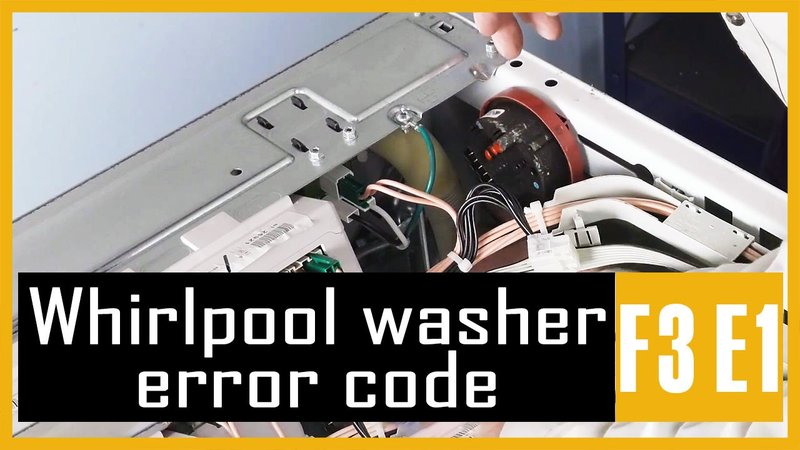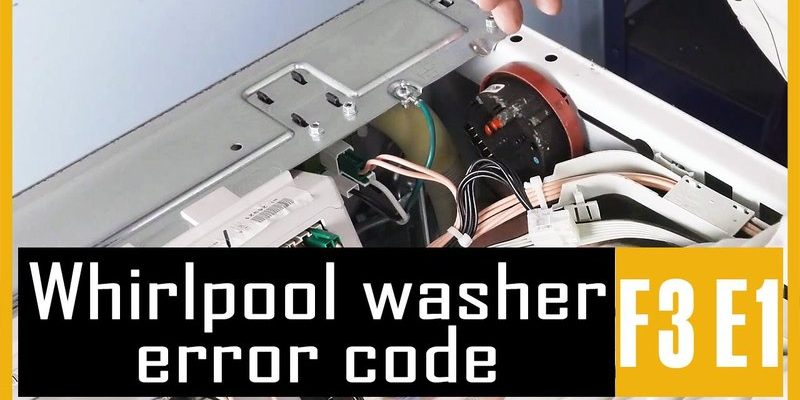
Microwaves, at their core, are marvels of modern technology. They zap your leftovers in seconds and pop your popcorn to perfection. But when these machines flash an error code, it’s their way of communicating that they’re experiencing a hiccup — much like when your car’s dashboard lights up with a warning. The “E1” error code is a common alert, and understanding it can save you from unnecessary stress and expense.
Understanding the Error Code E1
Before diving into the nitty-gritty, let’s decode what error code “E1” usually signifies. The E1 error in Whirlpool microwaves typically suggests there might be an issue with the electronic control board. Think of this board as the brain of your microwave, orchestrating all its functions. Like when you have a headache and can’t focus properly, if there’s a problem with the control board, your microwave might not function as intended.
This error can be triggered by several factors, such as a power surge, which is like an unexpected jolt of electricity that can confuse the electronic circuits. Alternatively, it might point to a loose connection within the circuit board, similar to a wobbly plug that doesn’t quite stay in the socket. Wear and tear over time can also play a part, causing components to falter or degrade.
Now, you might be thinking, “Do I need to call an expert right away?” Not necessarily. Sometimes, simply unplugging the microwave, waiting a few minutes, and then plugging it back in can reset the system, much like rebooting a sluggish computer. However, if the error persists, it’s a sign that closer inspection might be necessary.
How to Troubleshoot the E1 Error Code
Let’s get hands-on and explore some basic troubleshooting steps. It’s like being a detective on a mission to get your microwave back to its merry heating ways. First, ensure that your microwave isn’t trying to communicate a deeper problem. Begin by performing a simple reset: unplug it, wait about ten minutes, then plug it back in. This can clear minor glitches, restoring the electronic circuits to their default state.
If the error remains, it’s time to look under the hood, metaphorically speaking. Safely remove any covers or panels if you’re comfortable doing so and examine the wiring and connections. Look for anything unusual, like a wire that appears out of place or a connector that seems loose. It’s much like checking the battery cables on your car — a simple reconnection can sometimes solve the problem.
Should these steps fail to resolve the issue, it might be time to consider calling in the pros. A certified technician can diagnose the problem more thoroughly. While it’s tempting to solve every issue yourself, especially if you’re a DIY enthusiast, sometimes professional help ensures the job is done safely and correctly. Plus, it saves you from the risk of voiding any existing warranties.
Preventing Future E1 Errors
The best offense is a good defense, right? Maintaining your microwave in good shape can help prevent future mishaps. Just as you might take your car for regular check-ups, keeping your microwave clean and ensuring it stays dry can extend its life. Moisture is a hidden enemy that can infiltrate the control board, much like water seeping into cracks of a foundation. Regularly wiping down the microwave’s interior and ensuring it’s well-ventilated can help dodge potential issues.
Another precaution is to use surge protectors to guard against unexpected power surges. These handy devices act like a buffer, protecting the delicate electronic circuits from sudden spikes in electricity. It’s a small investment that can save you from a big headache down the line.
Finally, always refer to your user manual. It’s a treasure trove of information tailored specifically for your model. The manual can provide unique insights, including recommended maintenance practices and troubleshooting tips tailored for your specific appliance.
In summary, while the E1 error might initially seem daunting, it’s often a manageable issue. With a bit of patience and some savvy troubleshooting, you’ll likely have your Whirlpool microwave back to zapping snacks in no time. Remember, a little understanding and care can go a long way in keeping your kitchen appliances running smoothly.
